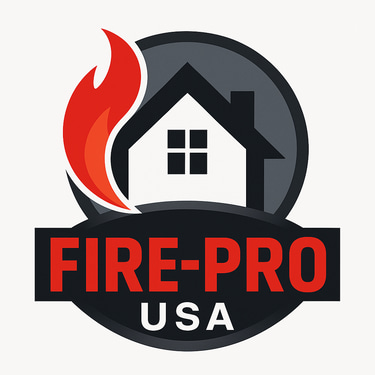
What Is A Hardened Home
The features of a structure that improve wildfire survivability


What is a Wildfire-Prepared Structure?
A structure that can withstand the onslaught of a wildfire without emergency intervention is a wildfire prepared structure. So, let’s break down what each element of a prepared structure consists of.
The structure is considered “hardened” when it is resistant to direct heat contact and is ember-proof. In the wildland urban interface (WUI), direct heat and flame contact from vegetation touching, or very near, will ignite the structure. This is why the principles of FireWise are so important. Having separation from the vegetation will prohibit the “fuse” from directly igniting the structure. Grass, brush, and trees touching one another are the fuse.
Having brush and or vegetation separated so that one plant or groupings of plants can’t ignite another one is the goal of FireWise. However, the distance from the structure to the vegetation is also a critical factor. Just being separated from each other doesn’t mean the structure won’t ignite. Radiated heat or convection currents can still cause ignition if any burning vegetation is too close. This is why the “Zero Zone” is now a critical component of FireWise. The Zero Zone is zero to five feet from the structure. There shouldn’t be anything combustible in that zone. Although I would go further and say ten feet is much better, due to wind-driven fires causing the flames to possibly blow in the direction of the structure, the more separation the better. The Zero Zone is also critical in preventing ember ignitions next to the structure.
And now for the hardened structure. The structure is vulnerable to ignition even if there is no vegetation nearby. Embers are the culprit! Embers can get blown inside a structure through any type of opening, particularly through ventilation vents situated around the structure used for attic and foundation ventilation.
Embers will often start a small fire that, because no one is available to extinguish it, grows into a large fire that will destroy a structure from the inside or outside. Hardened structures have ember-proof vents or screens to prevent the embers from getting inside. An ember-proof screen is typically a screen that is like a window or door screen made of stainless steel. The screen can go right over the existing vent, which typically has larger openings than the ember-proof screen. Some vent manufacturers make fire and ember-proof vents, which are expensive but necessary in the right circumstances. Fire and ember-proof vents are necessary if the structure's siding is combustible. In the event the siding catches fire, the fire won’t enter the structure through the vent opening. The vent occludes the flames.
Wood siding on a house can be made fire-resistant using long-term fire-retardant stain or paint. While not as desirable as having noncombustible siding, like stucco, the fire retardant does provide an added layer of protection that can enhance the structure's survivability. The fire-retardant stain and paint are usually additives, so there is no limit to color or stain choices.
Of course, having a noncombustible roof is important. Embers blowing through the air and landing on a roof that is combustible or has combustible matter like leaf build-up on it are responsible for destroying structures from the top down. A hardened home will have a noncombustible roof that is in good repair and clean from debris, with no leaf accumulation in the gutters. Tile roofs, although considered noncombustible, are very vulnerable to ignition if broken or do not have bird stops in the eave openings. So, just having a noncombustible roof covering doesn’t mean there isn’t a threat of ignition. The roof must withstand embers from penetrating and igniting the combustible layer of tar paper and wood beneath.
Exposed wood, such as open wood eaves, patio decks, and wood door and window trim, can also be vulnerable. If replacing them with noncombustible materials is not practical or financially viable, they can all be treated with long-term fire retardants.
A hardened home does not have to be void of landscaping or be made of concrete. The home merely needs to be free from ember fire threats and direct heat contact by burning vegetation. If another structure isn’t close enough to be an ignition threat, a hardened structure is highly likely to withstand the onslaught of a wildfire without emergency intervention. In fact, a hardened home is likely to be a good place to shelter in place, particularly if there is the ability to provide emergency intervention just in case. Thus, the need for learning how to be prepared and stay and defend safely and competently if you so choose.
Contacts
(602) 350-8227
info@fire-prousa.com
Contact Page
Emergency Service Hours
24X7, 365 days per year
